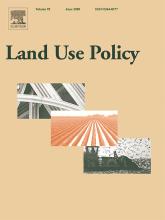Resource information
Brazil has become an agricultural powerhouse, producing roughly 30 % of the world’s soy and 15 % of its beef by 2013 – yet historically much of that growth has come at the expense of its native ecosystems. Since 1985, pastures and croplands have replaced nearly 65 Mha of forests and savannas in the legal Amazon. A growing body of work suggests that this paradigm of horizontal expansion of agriculture over ecosystems is outdated and brings negative social and environmental outcomes. Here we propose four strategies that can reduce deforestation, while increasing production and social wellbeing. First, eliminate land grabbing and land speculation through designation of public forests. This would clarify land tenure and limit the pool of land available for uncontrolled expansion of agriculture and ranching. Second, reduce deforestation on private properties by implementing existing mechanisms in Brazil’s Forest Code to facilitate payments for environmental services, with support from market initiatives for sustainable sourcing of agricultural products. Third, incentivize increased productivity on medium and large properties through targeted investments. By stimulating adoption of proven technologies for sustainable intensification, this would help meet Brazil’s production targets and growing international demand for agricultural products, without expanding into new production areas. Finally, foster economic, environmental and social improvements through technical assistance to small farmers. Small farmers occupy a large swath of the Amazon and often lack access to technical assistance, production technology, and markets. Providing quality technical assistance to small farmers could help them better align production practices with local opportunities; increase household income and improve livelihoods; and reduce deforestation pressure. By implementing these four strategies in a coordinated effort between public and private agents, Brazil can show the world how to reduce deforestation while increasing agricultural output, reestablishing its leadership in managing natural resources and mitigating climate change.


